Family : Acanthuridae

Text © Giuseppe Mazza

English translation by Mario Beltramini
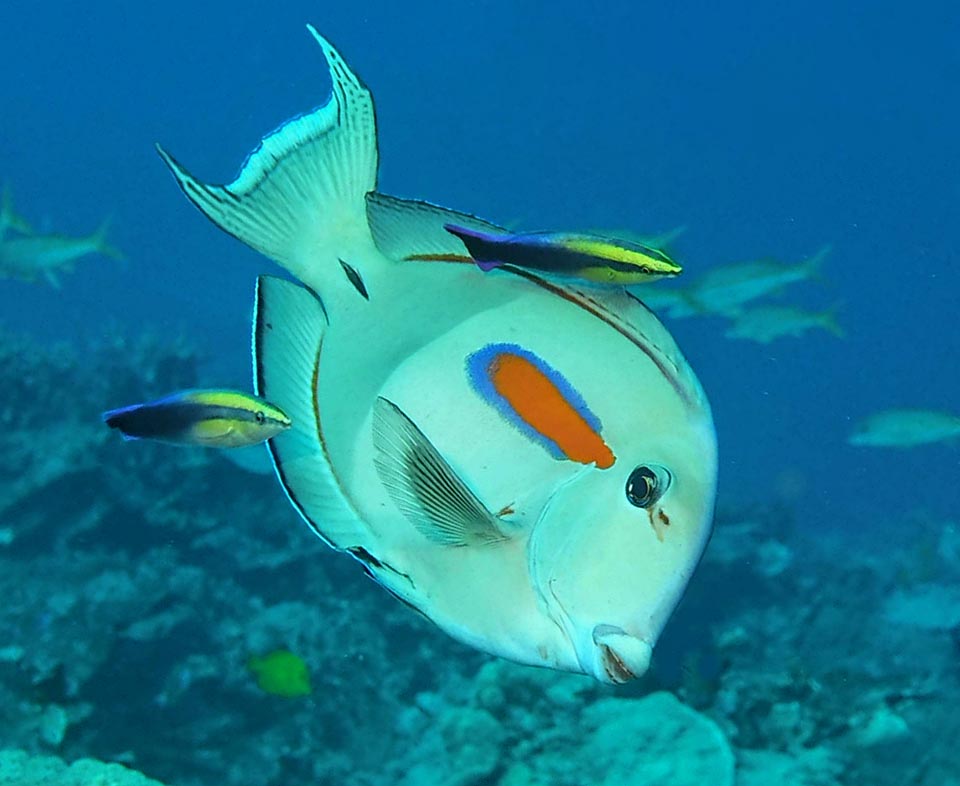
Up to 35 cm long, Acanthurus olivaceus, here together with two cleaner wrasses, is frequent in the tropical waters of the Indo-Pacific © Barry Fackler
The Orangespot surgeonfish or Olive surgeonfish (Acanthurus olivaceus Bloch & Schneider, 1801), belongs to the class of the Actinopterygii, the ray-finned fishes, to the order of Perciformes and to the family of Acanthuridae.
The name of the genus “acanthurus”, comes from the Greek “akantha” = spine, and “ura” = tail, due to the spine, sharp as a razor, these animals do have on both sides of the tail. The name of the species “olivaceus”, means in Latin “of olive colour”, because the first and second part of the body recall the colour of the olives at different stages of ripening.
Zoogeography
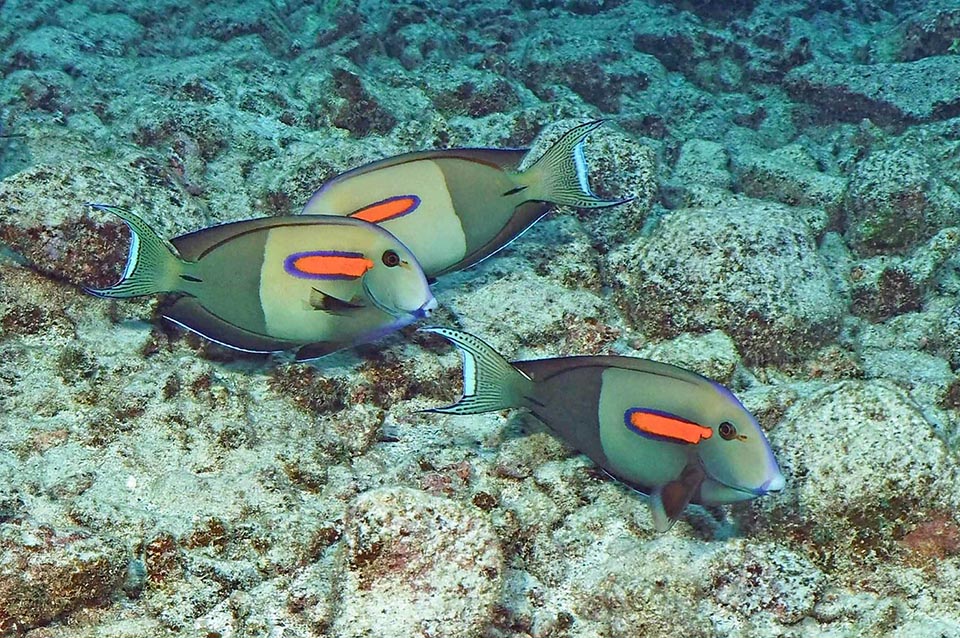
It lives in near rocky zones, mixed with sand and debris, eating seaweeds, often filamentous, small invertebrates and sediments © Barry Fackler
It is present in the tropical waters of the Indo-Pacific. We find it, just to give an idea, in Mauritius, the Cocos, and Christmas Islands, in Malaysia, Indonesia, Australia, New Guinea, Micronesia, New Caledonia, Philippines, Taiwan, and China up to the southern part of Japan. Southward, it reaches Lord Howe Island, eastward, the Marquesas Islands, the Hawaii and Cocos Island.
Ecology-Habitat
The adults live between the 10 and the 50 m of depth, in zones often rocky or mixed of sand and debris; the juveniles prefer the shallow waters, less than 3 m, and the more protected areas of the reefs.
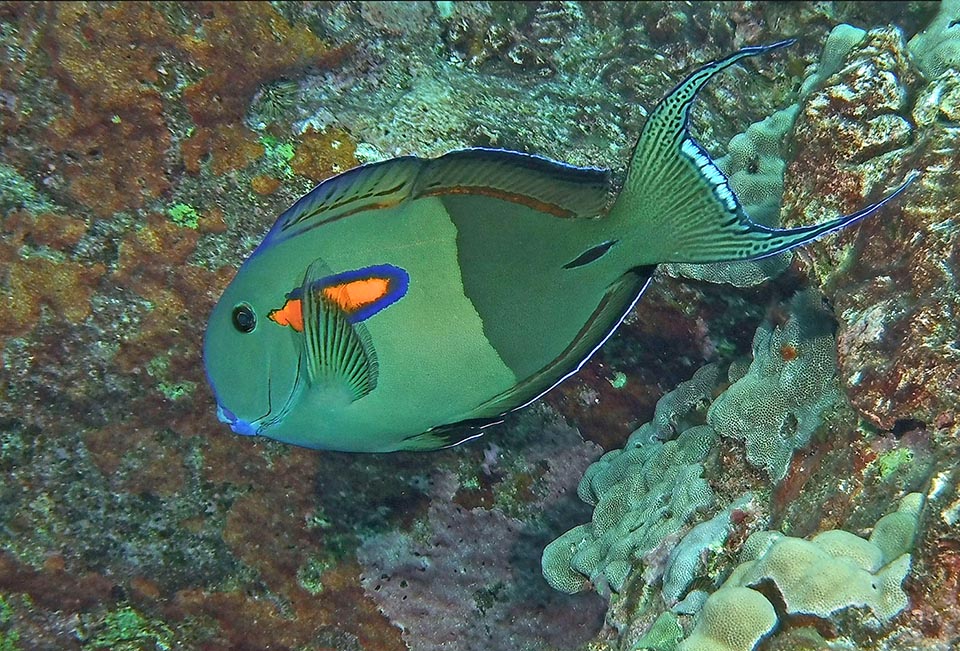
With a contrast more or less marked due to mimetic or emotional reasons, the livery is abruptly broken with the first two thirds paler © Barry Fackler
Morpho-physiology
It can reach the 35 cm, but usually does not exceed the 30 cm.
The body is flat, more or less oval, with only one big dorsal fin with 9 spiny rays and 23-25 soft ones. The anal is symmetrical but shorter, with 3 spines and 22-24 unarmed rays; the ventral fins, of modest size, have 1 spine and 5 soft rays; the pectoral ones are rather long and pointed; the caudal is decidedly crescent-shaped.
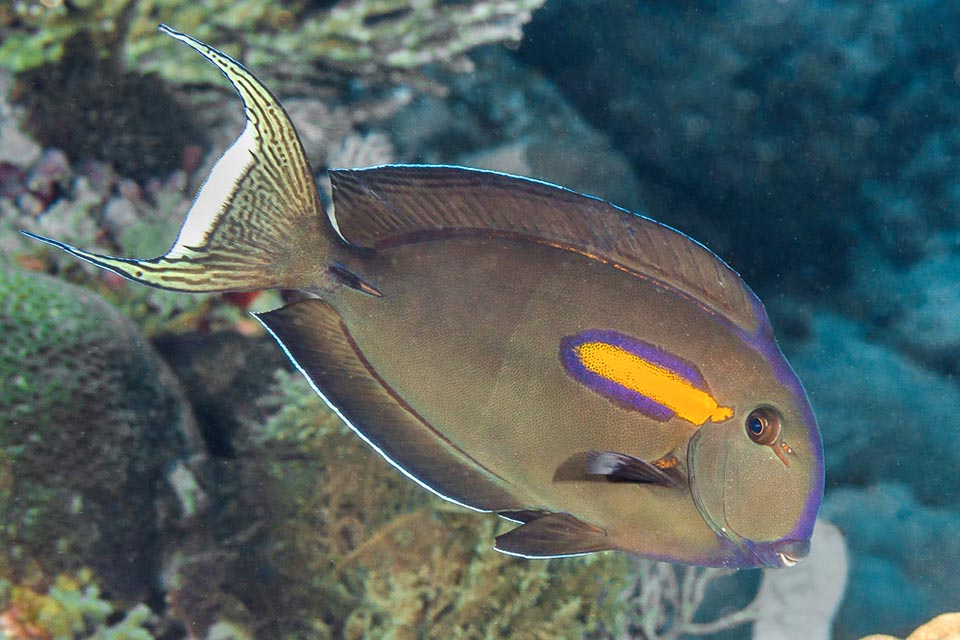
Typical is also the showy orange oval spot, black-purplish hemmed, close to the operculum © François Libert
Each jaw carries 16 oval teeth, purposely serrated for cutting the seaweeds.
The operculum and the pre-operculum have some striae and there are several gill rakers.
The livery is unmistakable: the first two thirds of the body are pale, with a showy oval orange dot edged of black-violaceous which starts from the end of the operculum; then, suddenly, with a sharp break, the rear third is dark; brown-greyish, more or less olivaceous. And this contrast between the two zones increases, with a clear mimetic function, when the animal is under stress. The caudal peduncle has, as usual, the cutting blade, typical of the genus Acanthurus, evidenced by a black trait, and the caudal fin, ornamented with dashes and aligned dots, ends in a white zone at the centre. But the pectoral fins, all others are edged in blue.
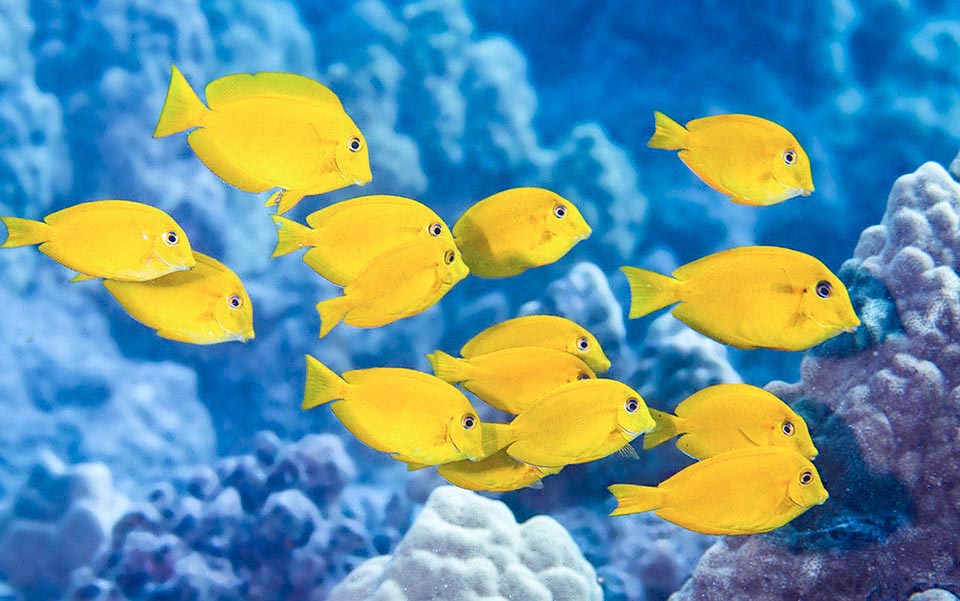
Initially the juveniles of Acanthurus olivaceus are wholly yellow © Todd Aki
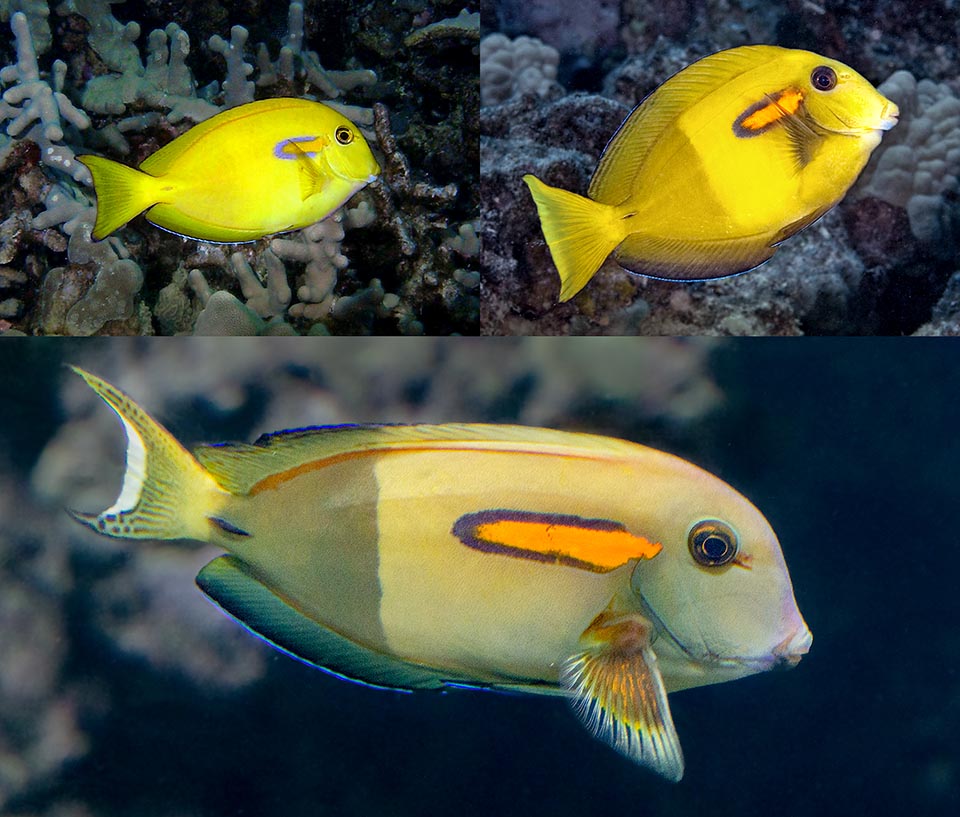
Then appears the oval spot and finally the dark zone that breaks the fish. The body, roundish, elongates and the caudal fin gets lunate © Barry Fackler top left © Bo Pardau right and © Giuseppe Mazza below
Ethology-Reproductive Biology
The orangespot surgeonfish lives alone or in small groups, nourishing mainly of filamentous, but even more consistent, seaweeds, of diatoms, foraminifers of the genus Calcarina, small invertebrates, and often of the superficial pellicle of microscopic algae and debris covering the bottoms. The eggs are pelagic and the juveniles show a livery completely different from that of the adults. At the beginning, they are completely yellow; then the orange stripe appears and, finally, the typical broken livery.
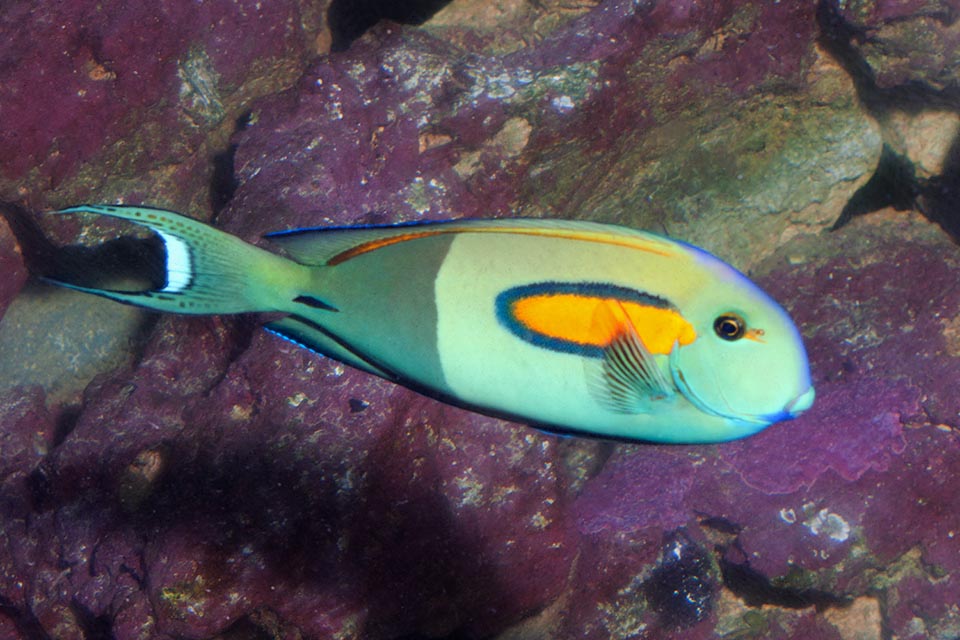
Often present in the aquaria and locally caught for food despite the high risk of ciguatera, this species has a good resilience and is not endangered © Giuseppe Mazza
Acanthurus olivaceus is consumed by the locals despite the risk, high, at times, of ciguatera, a severe food poisoning caused by the presence of poisonous organisms in the dietary regimen of this fish, and the juveniles often die miserably in the domestic aquaria. However, it is not an endangered species. The resilience is good, with populations that can double their members in 15 months, and the fishing vulnerability index is extremely low, marking only 18 on a scale of 100.
Synonyms
Hepatus olivaceus Bloch & Schneider, 1801; Rhombotides olivaceus Bloch & Schneider, 1801; Teuthis olivaceus Bloch & Schneider, 1801; Acanthurus eparei Lesson, 1830; Acanthurus humeralis Valenciennes, 1835; Ctenodon erythromelas Swainson, 1839; Harpurus paroticus Forster, 1844; Acanthurus chrysosoma Bleeker, 1857; Hepatus chrysosoma Bleeker, 1857.
→ For general information about FISH please click here.
→ For general information about BONY FISH please click here
→ For general information about CARTILAGINOUS FISH please click here.
→ To appreciate the BIODIVERSITY of BONY FISH please click here.
→ To appreciate the BIODIVERSITY of CARTILAGINOUS FISH please click here.
